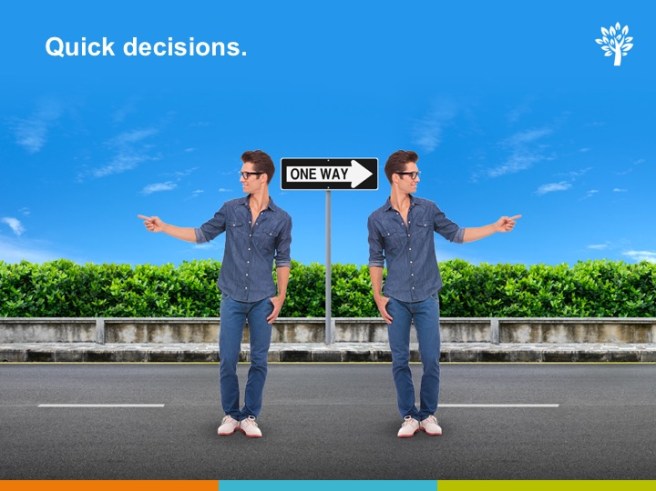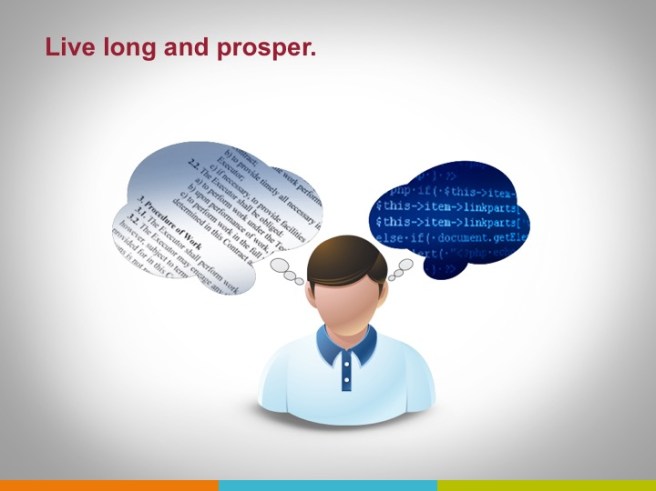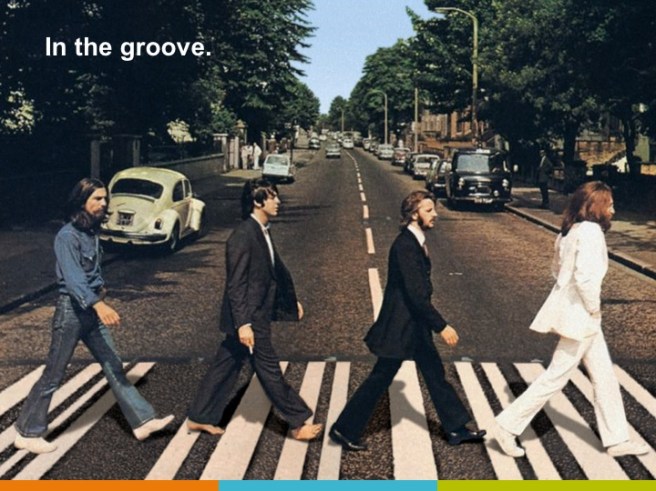
Up on the mainsail yard, almost out to the yardarm. Cap’n Bob’s immortal words yelled at this moment — ‘ya won’t fall off if ya don’t let go…’ in the Whitsunday Islands, Australia, on the Coral Trekker.
On this blog, we’ve looked at the evolution of design thinking — from Authoritarian v-Meme (I’m the brilliant genius and folks should do what I say!) to Communitarian v-Meme design. We’ve examined Algorithmic Design, and moved through to Heuristic Design, or the standard gated design process most practitioners are familiar with. All map to the various v-Meme levels in Spiral Dynamics, and different stages of empathetic development. So what’s the master pattern here? Since all designs must originate from the knowledge of the designers, there is an implicit mapping back to the thought processes characterizing each of the Spiral levels, in the I- and We v-Meme pattern — as well as the social/relational structures of the organizations that we function within.
But before we dive headlong into another open-ended Theory of Everything for Design, let’s go one step further and unpack a paradigm developed by Daniel Kahneman, of Thinking Fast and Slow fame, and winner of the Nobel Prize in Economics. Kahneman called impulsive, fast thinking ‘System 1’ thinking, and logical, slow thinking by the individual as ‘System 2’ thinking. These thinking modes are constrained to the individual — and it’s not surprising that Kahneman would stick down at that level. While his book is fascinating and a major contribution, it’s also pretty clear that the demands of academia are centered around reliability. And he’s an academic, in a fragmented social structure centered around the individual. The number of experiments proving the same concept, and centered on individuals in the book is a powerful reflection of the Legalistic/Absolutistic thinking required by the current university system. You walk away absolutely thinking he’s right — which is the point! Here’s a nice graphic illustrating System 1 thinking.

When you cross the street, you look both ways. Even if it’s a One-Way Street.
How about System 2? What could be better than allusion to Mr. Spock:

There are always those logical procedures that undergird the process of the logical mind.
And it’s a great start. So, if there’s System 1 thinking, and System 2 thinking, there has to be System 3 thinking. Right? Let’s define System 3 thinking as the first collective thinking mode, requiring the combined processing that empathy fundamentally demands, between Designer/s and Customers.

Successful System 3 communication will embody the initial rational place-taking between the responsible designer and his/her customers. Performance-based thinking, built with customer input is the minimum required for a successful design.
What about System 4 thinking? I like to conceive of System 4 thinking along the lines of a high-performance team, with coordinated practices, plays and strategies that also embody the nested nature of all our previous work — System 4 will also include Systems 1, 2 and 3 scaffolding. And that principle will hold as we move on up.

Egalitarian, rational, data-driven exchange, coupled with respectful lessons from everyone’s past experience will characterize System 4.
System 5 thinking is the first of the Spiral self-aware Tier 2 modes. Now, there is a requirement for the designer to be self-aware of their biases, and reflective on how their strengths, weaknesses and past experiences play into the role of design. Here’s a graphic that shows this concept:

Up from System 5, now my own enlightenment and insight becomes less clear. System 6 thinking may take many different modes. An example might be a globally networked teams headed by a self-aware designer, or more likely, a group of designers. Remember back to the posts on Servant Leadership 2.0? Now the need becomes apparent.
But on a local level, I like the metaphor of a very tight group of designers as musicians, riffing off each other’s immediate and long-term patterns. Jazz band might be a good term. Or we could use the Beatles as a metaphor for a group growing, changing, and collaborating in many different modes over time.

(For those interested in reading about the empathetic dynamics of the Beatles, I highly recommend the recent book by Josh Schenk, called Powers of Two, also about innovation and creativity!)
Above System 6? Enlightenment-wise, I’m fading fast. If it follows the pattern of Spiral Dynamics, System 7 needs to be an I-mode. Ken Wilber has explored the idea of what it means in the modern age to be a Bodhisattva, the Mahayana Buddhist term for an enlightened being that has stayed behind from entering Nirvana to help others do so. This corresponds to the Coral I-mode v-Meme in SD –a designer that has sublimated their desires and needs to understanding completely both the short-term and long-term needs of his/her customer and helping them along their path.

Hualin Temple, built to commemorate Bodhidharma, the founder of Zen Buddhism, in Guangzhou, China
Once we get up in these rarified spaces, I’m gasping for my own air of insight. But the pattern is clear. We can think about continual empathetic evolution. But as with all paths to larger awareness and enlightenment, we have to do the work. And just because I’m only able to get to System 7 doesn’t mean that there’s not more on top. The process will always be open-ended.
Further Reading: I wrote a paper on this concept, called “Understanding Engineering Relational and Knowledge Structures for Facilitation of Collaboration and Global Development,” for the American Society of Mechanical Engineering’s 2014 Annual Meeting, called IMECE. It’s a nice compact explanation, with empathetic evolution and SD thrown in.
See my comments in blog on the George Tech team, it really is more about this roadmap. Is it really a roadmap for organizational transformation ? It might me a roadmap for organization takeover?
Ryan
On Mon, Feb 29, 2016 at 3:06 PM, Its About Empathy – Connection Ties Us Together wrote:
> Chuck Pezeshki posted: ” Up on the mainsail yard, almost out to the > yardarm. Cap’n Bob’s immortal words yelled at this moment — ‘ya won’t > fall off if ya don’t let go…’ in the Whitsunday Islands, Australia, on > the Coral Trekker. On this blog, we’ve looked at the evolution ” >
LikeLike